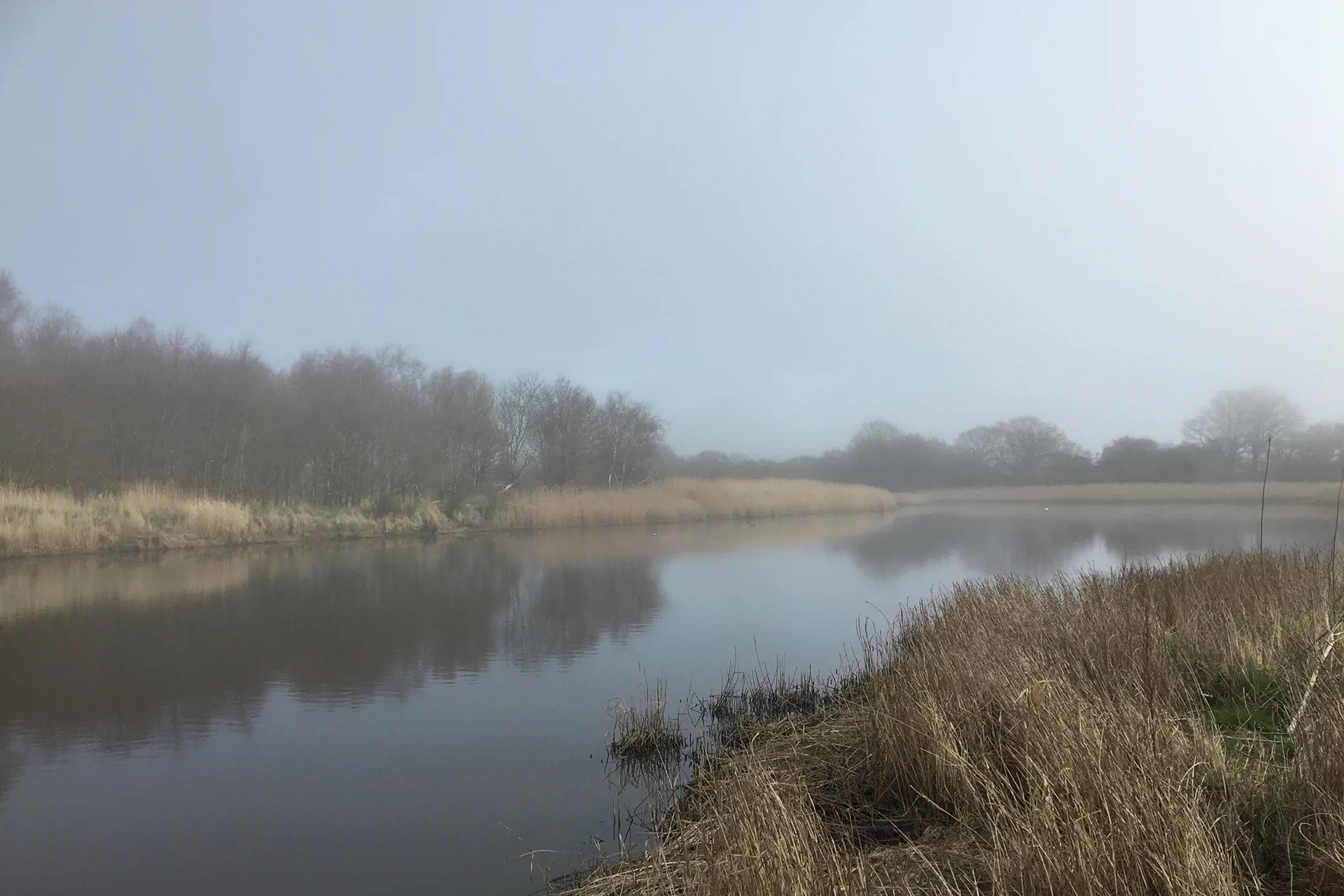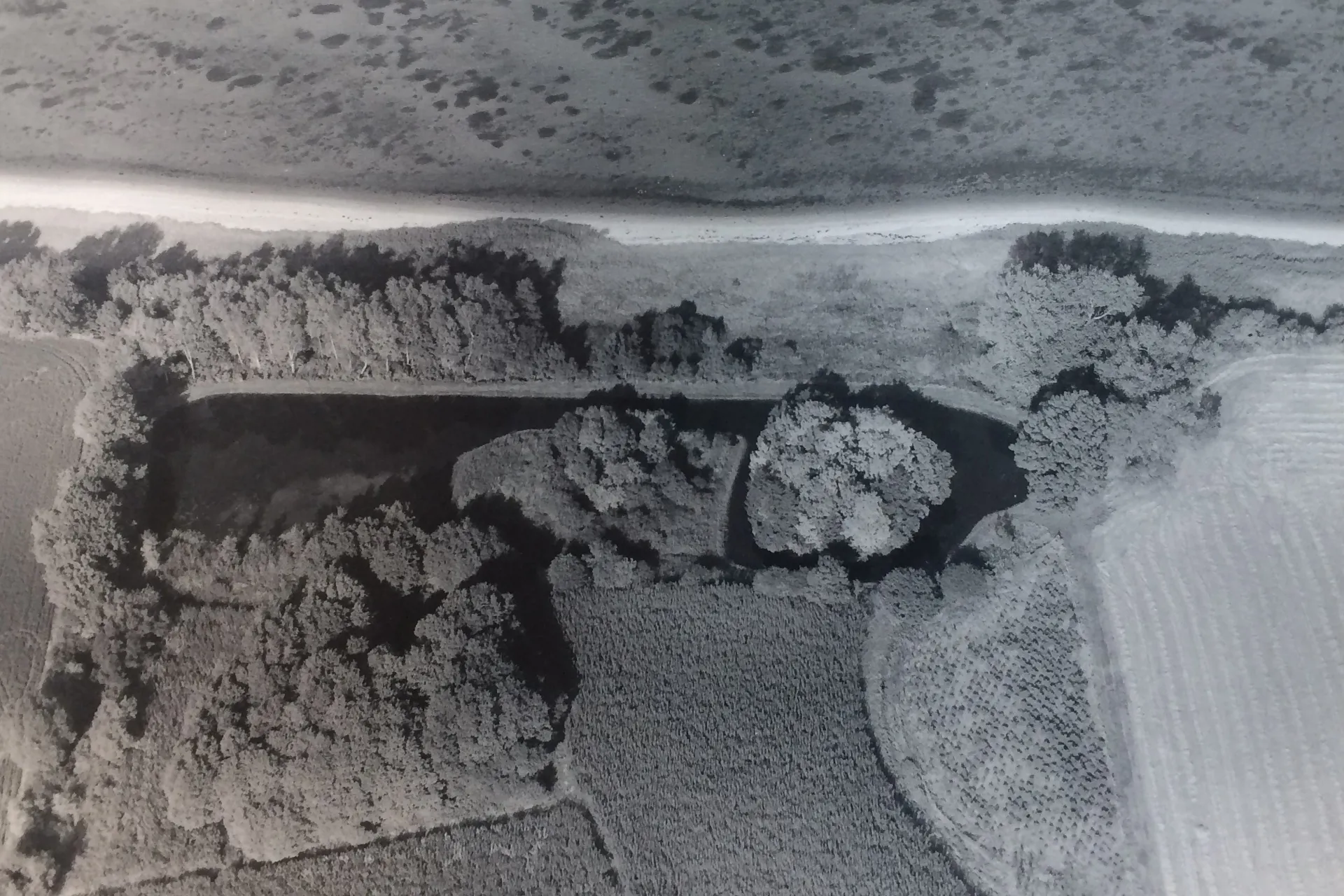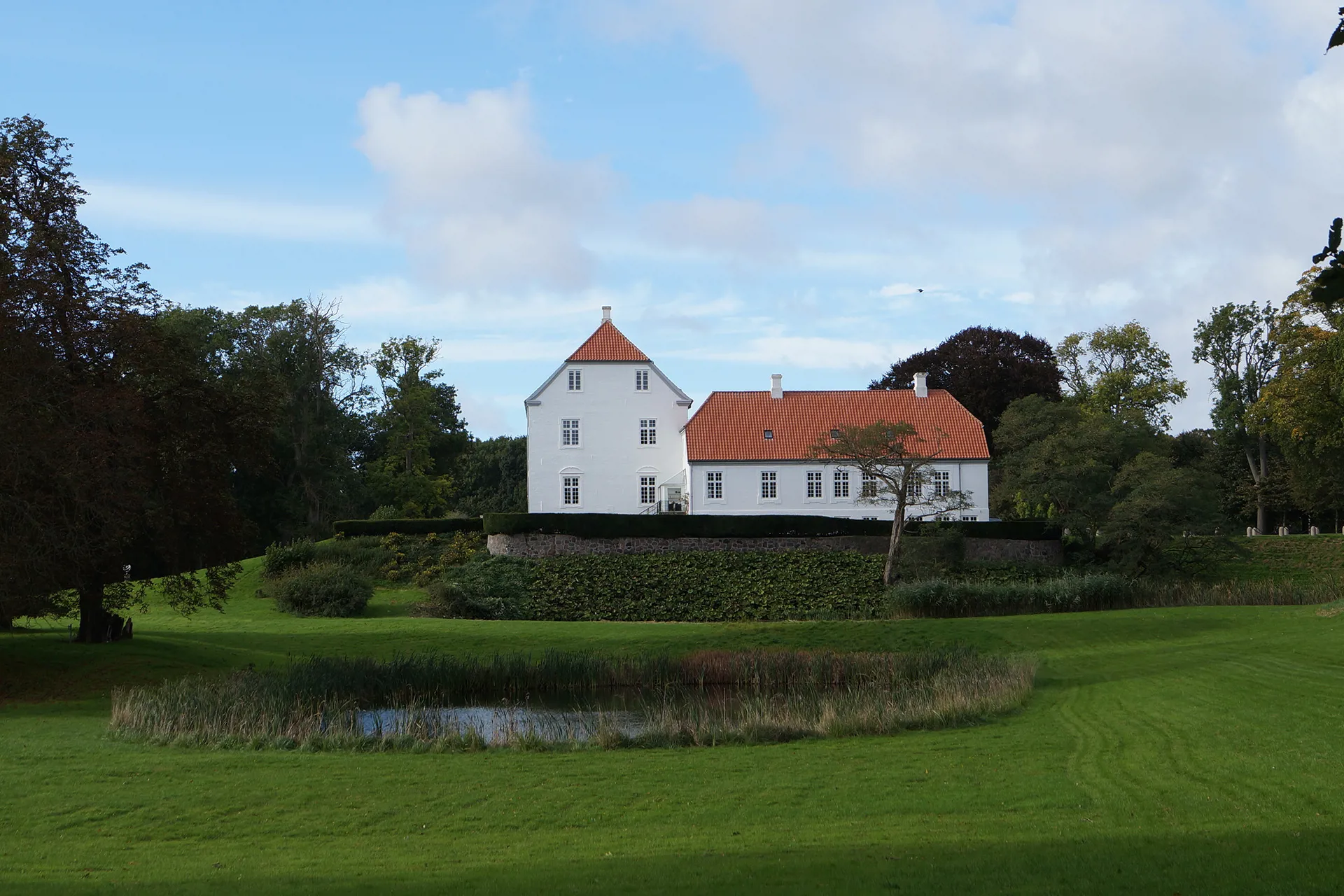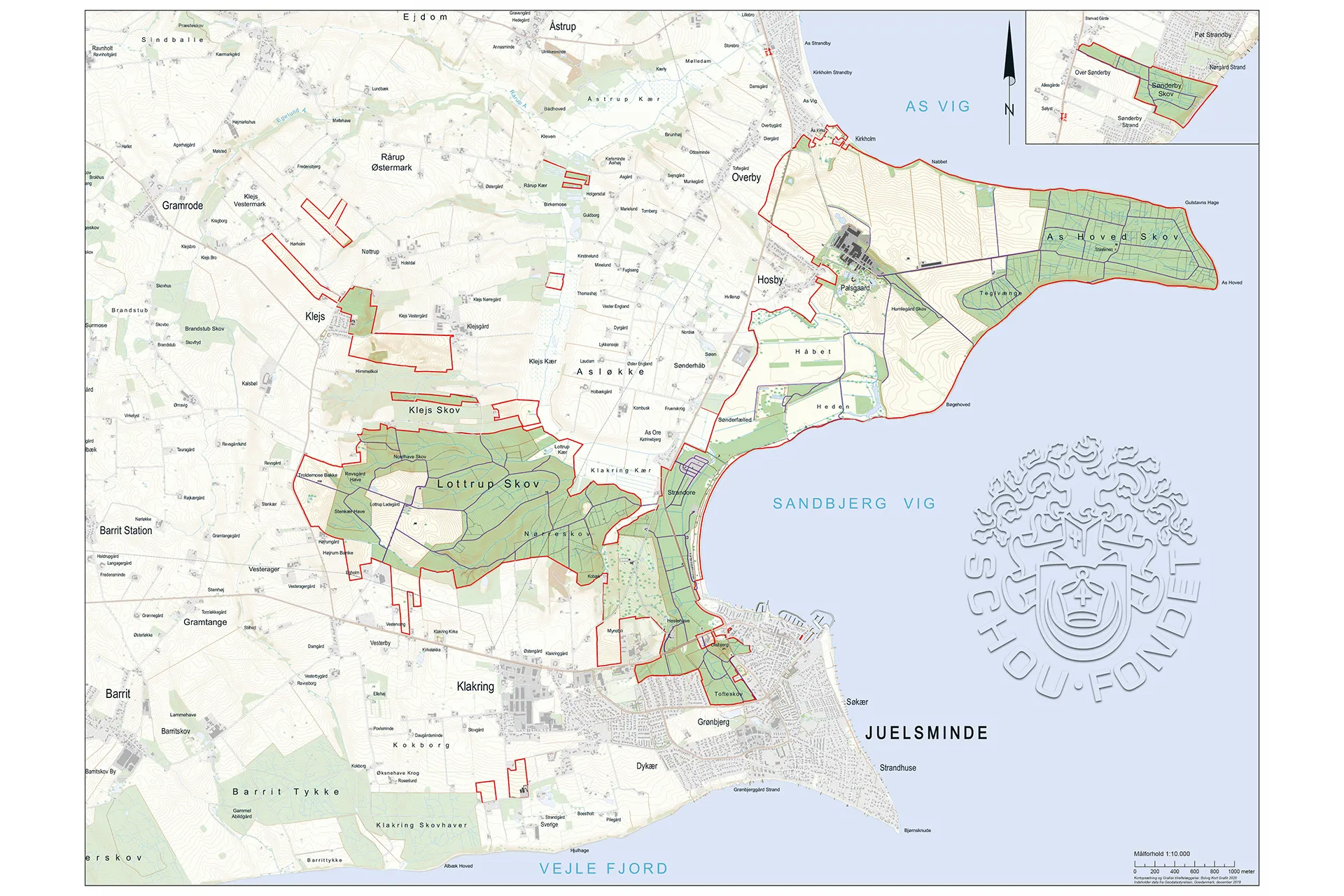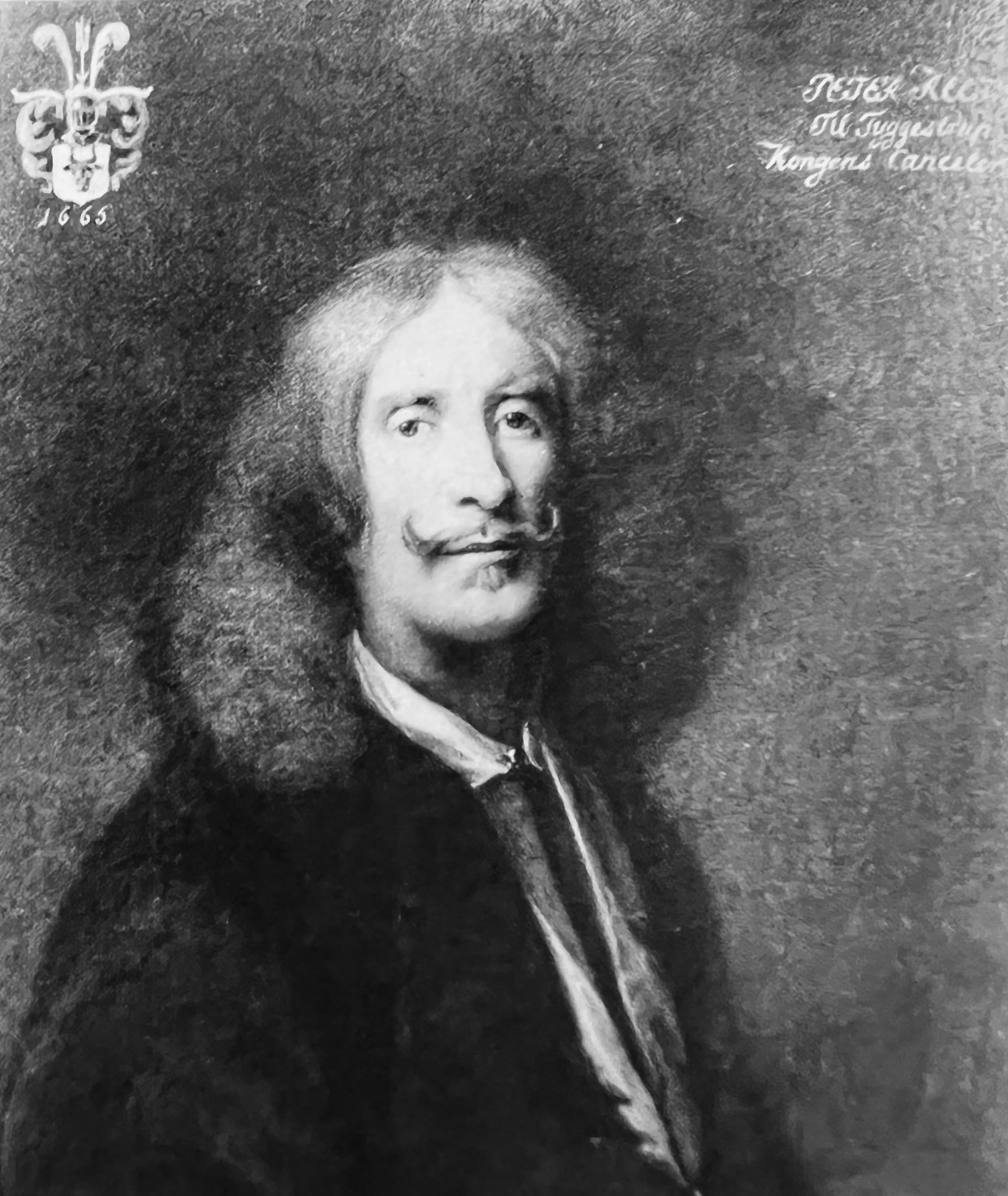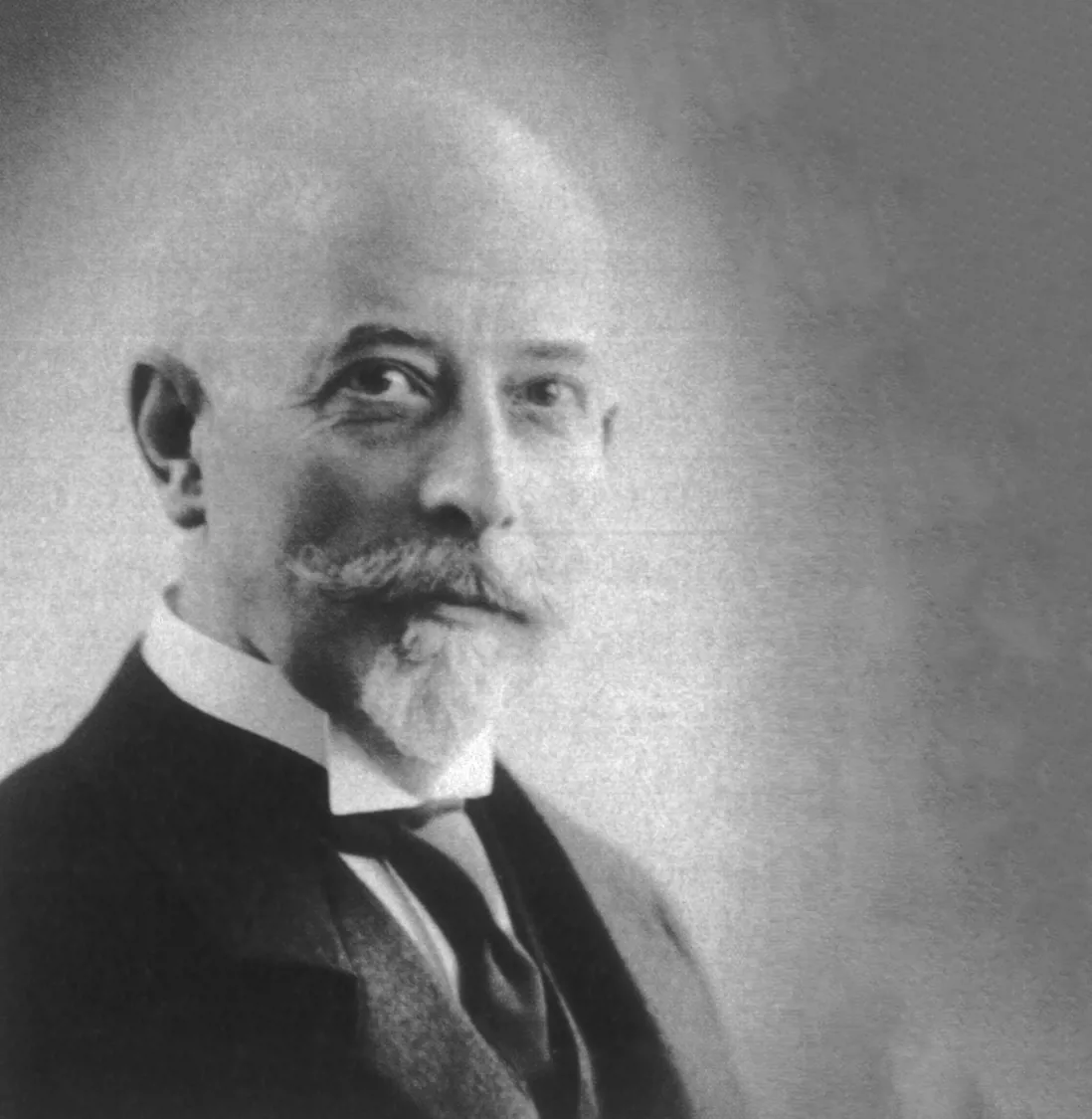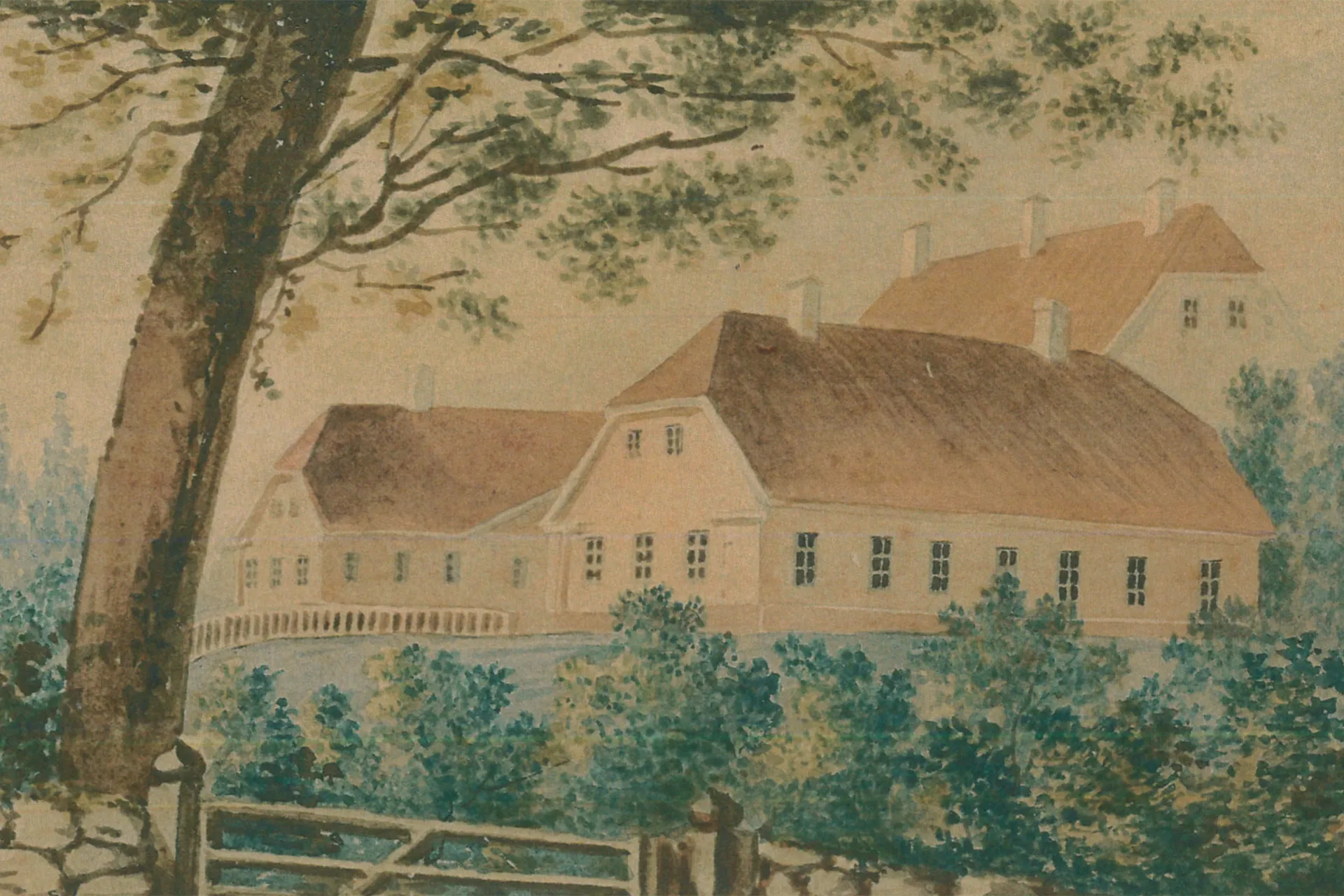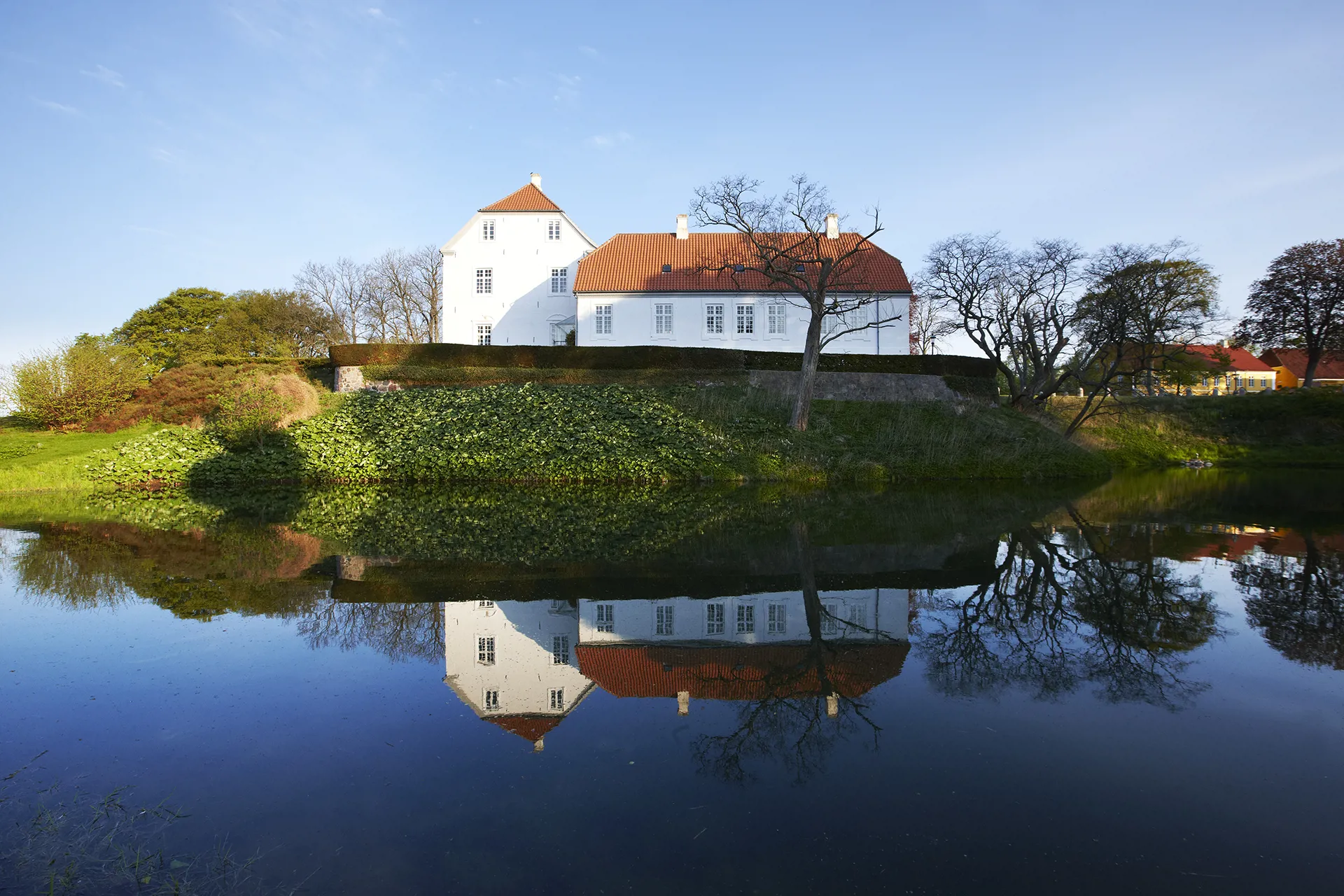Seabed turned into farmland
From parts of Palsgaard Manor Park, you have a view of the flat area known as "Haabet". Originally, "Haabet" was a cut-off costal bay, that remained underwater until 1883. Following the loss of Southern Jutland to Germany in 1864, national efforts were launched across Denmark to increase food production under the motto "What is lost outwardly must be regained inwardly".
At Palsgaard, a dike was constructed, and with the help of pumping stations, the water was redirected out to the sea.
In this way, 100 hectares of wet and marshy land were drained and transformed into farmland. Initially, the area was used for grazing and hay production, but when the pumps switched from wind power to electricity, it became possible to cultivate the land.
The map shows the area surrounding Palsgaard. The red markings indicates lands that today belong to the estate.
